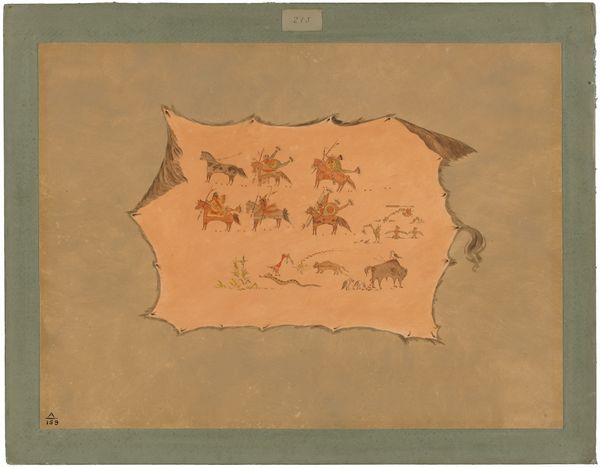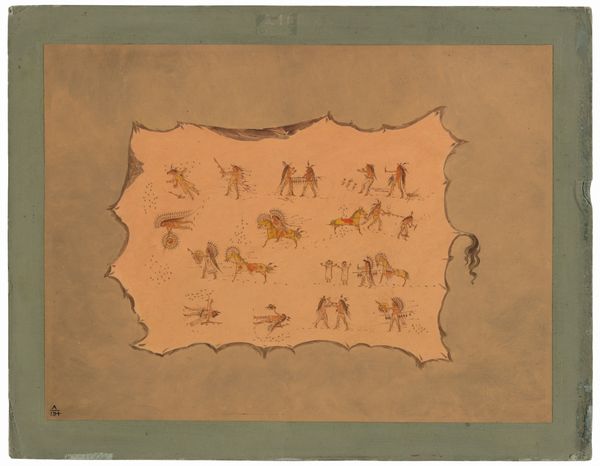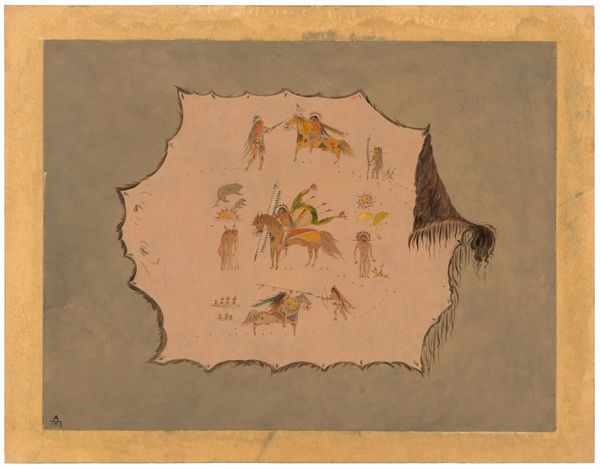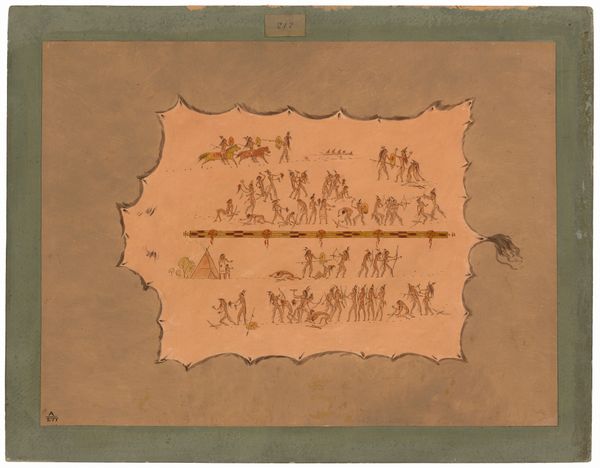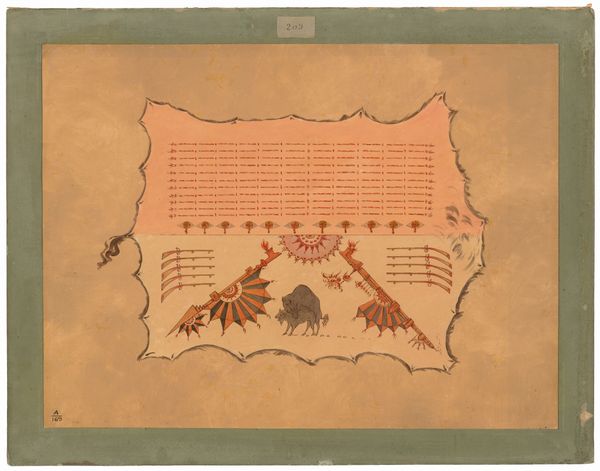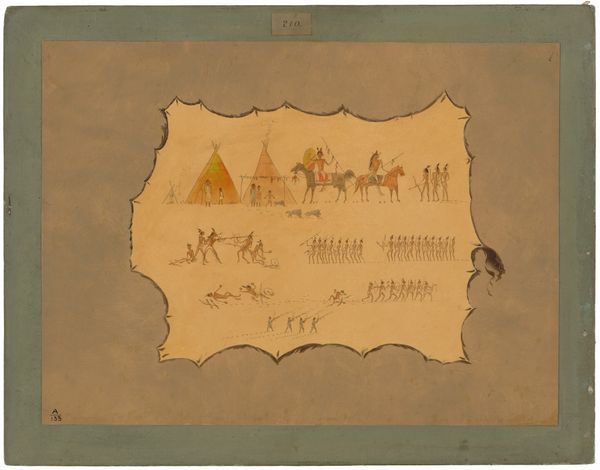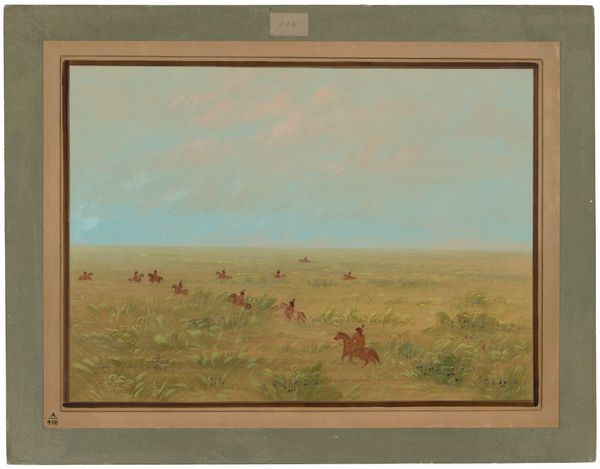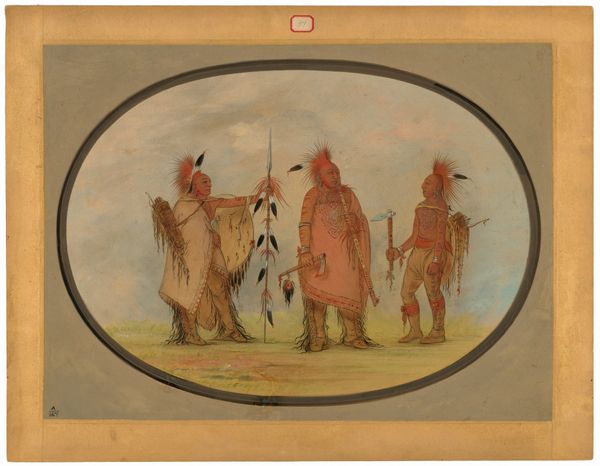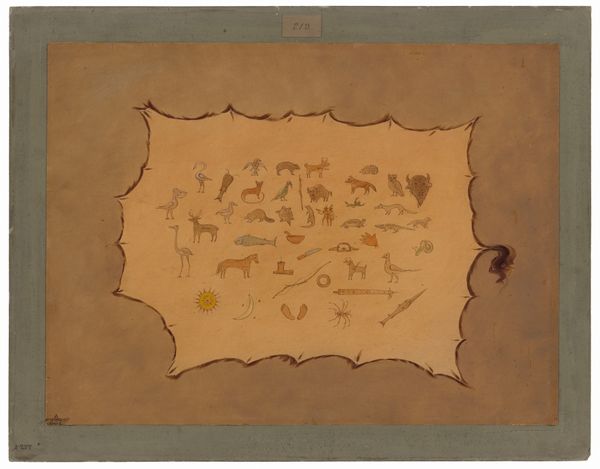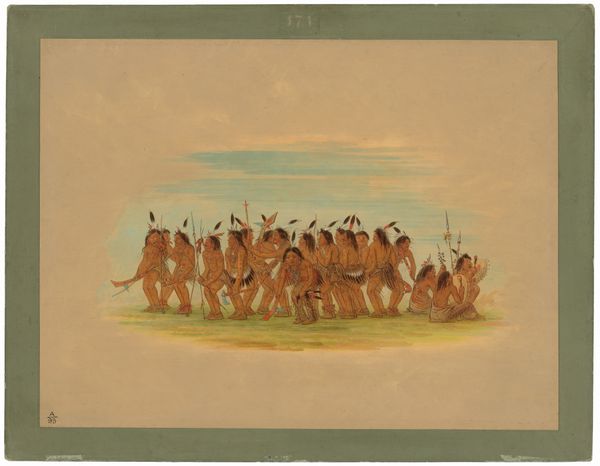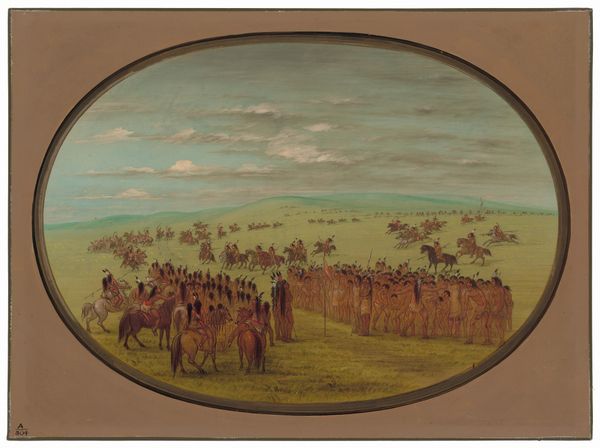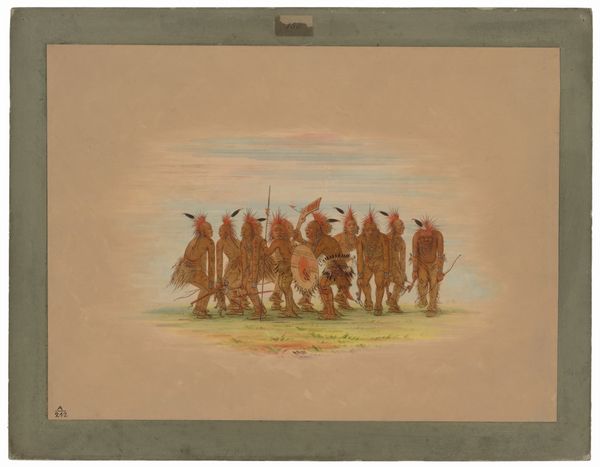
painting, gouache
#
narrative-art
#
painting
#
gouache
#
figuration
Dimensions: overall: 46 x 62 cm (18 1/8 x 24 7/16 in.)
Copyright: National Gallery of Art: CC0 1.0
Curator: I find this miniature, created by George Catlin between 1861 and 1869, incredibly poignant. It is a watercolor entitled, "Facsimile of Chief Four Men's Robe - Mandan." It portrays scenes adorning a robe, a literal layering of narratives. Editor: The sheer meticulousness of the depiction grabs me. You can almost feel the texture of the hide despite it just being watercolor. And the repeated motifs suggest a process akin to weaving, the making becomes integral to the content. Curator: Precisely! And consider what that content tells us. These vignettes aren’t just decoration. They record the Chief's notable deeds, a personal history writ large across a ceremonial garment. How do we decode it beyond a surface level narrative? Editor: I think part of the key lies in acknowledging the labor and skill involved. These weren't mass produced objects; this robe represents a significant investment of time and resources, becoming a repository of cultural knowledge as well as status. The material itself, presumably animal hide, and the pigments derived from the earth would all carry particular significance. Curator: The act of translation is something to ponder. Catlin, creating a facsimile, attempts to capture that authenticity but through a European artistic lens. It's a complex dance of preservation, appropriation, and perhaps inevitable alteration of meaning. This reminds me of Lévi-Strauss's "structural anthropology" when considering indigenous art and translation as text and image across societal lines. Editor: Absolutely, and understanding the material conditions of both the robe's original creation and Catlin’s subsequent rendering is vital. This object, even as a "copy," allows us to analyze trade, labor divisions, and power dynamics inherent in cross-cultural representation. And even, the economics of collecting indigenous artifacts at that period in history. Curator: Looking at it with these things in mind makes the historical layers almost palpable. It is more than an ethnographic study; it evokes questions surrounding Indigenous representation and power during settler-colonialism. The very act of documenting carries an ethical burden. Editor: Yes, from my perspective it prompts thinking on how artistic and artifactual materials survive such transitions. Curator: Indeed. It's a poignant reminder of both the resilience and vulnerability inherent in cultural artifacts when faced with larger power structures. Editor: And, what those objects may yet tell us when carefully observed.
Comments
No comments
Be the first to comment and join the conversation on the ultimate creative platform.
